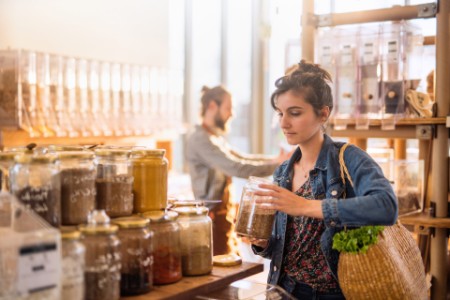But other barriers are also cited by consumers. 64% perceive sustainable options to be of poorer quality while 56% cite misleading product information as putting them off buying.
These two barriers can lead to a drop off in purchasing behaviour. Consumers lose patience, with 37% of consumers saying that understanding how to make more sustainable choices is too difficult or time-consuming. More than half (51%) lack trust in brands and retailers to help them make sustainable purchasing choices.
The retailer’s role in closing the trust gap to help the consumer make good choices
Consumers cite three main sources of information about how sustainable a product is – they are influenced by packaging claims, friends & family and the news media. Their mistrust, as well as the difficulty of understanding sustainability credentials, suggests there is more that retailers and brands can do to help consumers make sustainable choices, such as improved labelling. This desire for organisations to ‘make it clear for me’ and ‘make it real for me’ is explored further in the latest EY Human Signals research.
But there are other ways that the trust gap can be closed too, proving that sustainability is about action rather than words. Retailers and brands have adopted a range of different pledges to demonstrate their commitment to sustainability and therefore their appeal to consumers wanting to buy.
In the EY teams research, we tested several different pledges to see which would drive the most engagement to buy from consumers. A pledge to ‘donate 1% of profits for the environment, support grassroots protestors, launch petitions for environmental initiatives and use 70% recycled materials’ drove the highest engagement with a 23% increase in consumer preference to shop from the company or organisation concerned.
Pragmatic pledges, such as waiving shipping fees for the delivery of products with less packaging, drove a 15% increase in consumer purchase preference. Meanwhile less measurable pledges, such as a pledge to ‘make a US$2bn climate pledge to ‘decarbonise’ the earth and achieve net-zero by 2040’ drove only a 10% increase in purchase preference.
This shows that the most effective way to engage consumers in sustainability is about combining sustainability goals with financial and activist commitments and practical change.


